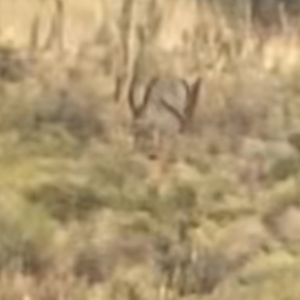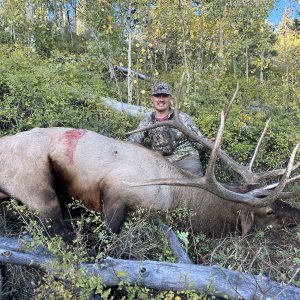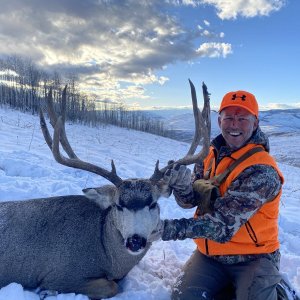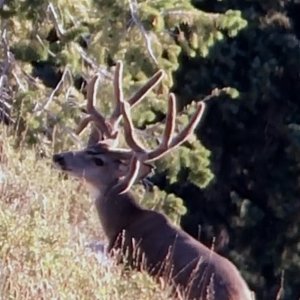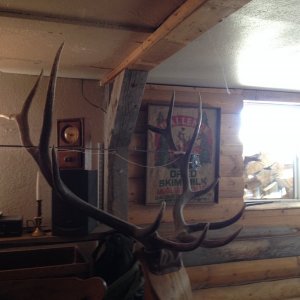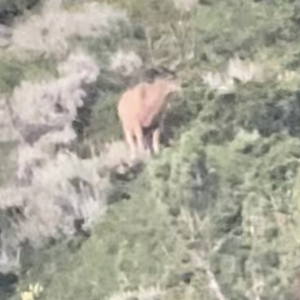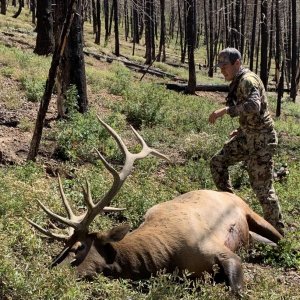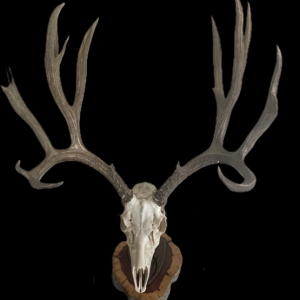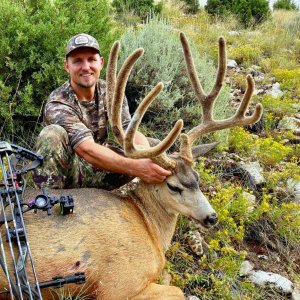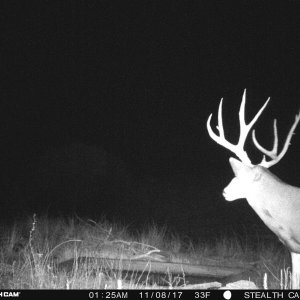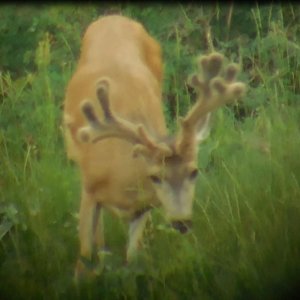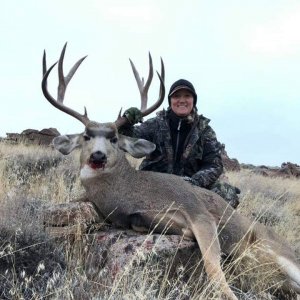T
TFinalshot
Guest
MAYBE IT'S JUST MY IMAGINATION BUT I SEEM TO DETECT A PATTERN HERE.
CASPAR STAR TRIBUNE
Working around the grouse
By DUSTIN BLEIZEFFER
Star-Tribune energy reporter
Ongoing studies of the greater sage grouse continue to alarm Wyoming's oil and gas industry.
Wildlife biologists have measured a 50 percent reduction of active grouse breeding grounds, or leks, inside active oil and gas fields, according to David E. Naugle, wildlife ecology professor at the University of Montana. Those leks that do remain active inside oil and gas activity shrink by half.
If trends like these aren't turned around, they can have a chilling effect on oil and gas activities that seem to be drawn to the same sage-steppe habitat all along the Rocky Mountains.
Coal-bed methane drillers in the Powder River Basin are still stinging from a massive, yet temporary, reduction in field activity due to timing and surface restrictions to protect sage grouse and raptors this spring.
Before talk returns again to the potential of an Endangered Species Act listing, the industry is taking action.
"Our hope and focus is to do the best for the bird ahead of any future regulatory and policy decisions," said Jason Begger, vice president of the Petroleum Association of Wyoming.
Begger said it wasn't difficult to convince about 100 of the region's leading wildlife biologists, regulatory professionals and oil and gas operators to convene in Casper this week. Over a two-day session, the group outlined several "best management" practices that oil and gas operators could begin to implement immediately to help preserve the greater sage grouse.
Several of the actions are already a part of normal operations: Consolidate linear facilities, reduce traffic, and ensure speedy implementation of reclamation. "Unitization" is a word that usually raises hackles in the industry, but is gaining more popularity as companies consider how to coordinate their construction and reclamation activities.
"There are a lot of redundancies (in best management practices), and that's a good thing," said Joe Icenogle, regulatory and public relations manager for Fidelity Exploration & Production.
Icenogle said most operators have a "code of conduct" -- no dogs, no guns, no drugs or alcohol. And it's important that operators insist their subcontractors adopt their code of conduct so there's an industry standard.
In fact, friendly encouragement and self-policing seem to be the overriding attitude among Wyoming oil and gas developers in regard to the sage grouse, which narrowly missed a formal review for federal protection just three years ago. Wyoming is among several Western states to launch sage grouse conservation efforts in recent years, and workshops such as the one PAW conducted this week are recognition of the need to inventory all conservation efforts in a manner that shows results on a regionwide basis.
One recurring theme at the PAW session this week was the need to perform extensive habitat inventories and mapping not only before development occurs, but before leasing decisions are made.
With full-scale development already under way in many areas, operators have only best practices to fall back on. Wildlife biologist David Naugle and others stress the need to consider setting aside large tracts of sage grouse habitat in future leasing decisions.
"We don't want to be fighting these battles on a field-by-field basis," Naugle said.
Not all the news is bad for sage grouse in Wyoming. The bird still enjoys some of its largest habitat here, including the Powder River Basin. Wildlife consultant Tom Maechtle said he performs surveys for individual coal-bed methane projects in the basin, and he has seen that many lek populations have remained stable for three to four years.
Some of that may be attributable to migration from other leks that are shrinking, however, he said. This year's wet spring should be favorable for sage grouse because it gives them a head start on gobbling up nutrients.
"We are seeing a positive blip," Maechtle said. "But the long-term trend data (for sage grouse populations) is still declining."
Energy reporter Dustin Bleizeffer can be reached at (307) 577-6069 or [email protected].
================
Industry: Relax wildlife rules
By MATTHEW BROWN
Associated Press writer
BILLINGS, Mont. -- Coal-bed methane industry representatives on Thursday asked federal regulators to loosen wildlife restrictions that shut down much of the industry's operations in Wyoming's Powder River Basin this spring.
During breeding periods for sage grouse, eagles and other wildlife, the federal Bureau of Land Management imposes monthslong shutdowns of coal-bed methane work to prevent disturbance of the birds' nests and mating grounds.
Researchers from the University of Montana say sage grouse populations in the Powder River Basin have suffered a sharp decline inside active coal-bed methane fields over the last decade.
As coal-bed methane production shifted onto federal land during the last year, the restrictions meant to protect the birds came into play more often. That curtailed the drilling of new wells and prompted layoffs of some industry contractors.
In response, the Petroleum Association of Wyoming this week hosted a two-day "sage grouse workshop" in Casper involving coal-bed methane companies, state and federal regulatory agencies and independent researchers.
BLM officials would not comment on the request to modify its restrictions but agreed to work with the industry in the future.
"Nobody in industry is asking BLM to scratch what we have and reduce protections. It's just how can we do things more efficiently," association vice president Jason Begger said.
In the case of sage grouse, the drilling area closures last from March through mid-June and cover a two-mile radius around the bird's breeding grounds, or leks.
Offering an example of how those rules don't always make sense, Begger said that if a closed area is also bisected by a highway, it does little good to apply the restrictions to areas separated from the lek by the road.
BLM officials have said there has been no research to determine if the restrictions work.
But the possibility of relaxing the rules with sage grouse already on the decline was dismissed by Jill Morrison with the Powder River Basin Resource Council.
"What we're doing isn't very effective, and it sounds like this will make it worse," said Morrison, whose group has pushed for tighter controls on the industry. "The sage grouse is going over the brink. We're already going in the wrong direction, and they just want to get there faster."
Wyoming BLM Associate State Director Don Simpson said he anticipated "a continued dialogue with industry and the various partners that are working together" to address sage grouse issues.
Another federal official, U.S. Fish and Wildlife Service field supervisor Brian Kelly, commended Begger's group for "taking the lead" in dealing with sage grouse problems.
"They realize there are major impacts on these species and they are declining as a result," Kelly said.
CASPAR STAR TRIBUNE
Working around the grouse
By DUSTIN BLEIZEFFER
Star-Tribune energy reporter
Ongoing studies of the greater sage grouse continue to alarm Wyoming's oil and gas industry.
Wildlife biologists have measured a 50 percent reduction of active grouse breeding grounds, or leks, inside active oil and gas fields, according to David E. Naugle, wildlife ecology professor at the University of Montana. Those leks that do remain active inside oil and gas activity shrink by half.
If trends like these aren't turned around, they can have a chilling effect on oil and gas activities that seem to be drawn to the same sage-steppe habitat all along the Rocky Mountains.
Coal-bed methane drillers in the Powder River Basin are still stinging from a massive, yet temporary, reduction in field activity due to timing and surface restrictions to protect sage grouse and raptors this spring.
Before talk returns again to the potential of an Endangered Species Act listing, the industry is taking action.
"Our hope and focus is to do the best for the bird ahead of any future regulatory and policy decisions," said Jason Begger, vice president of the Petroleum Association of Wyoming.
Begger said it wasn't difficult to convince about 100 of the region's leading wildlife biologists, regulatory professionals and oil and gas operators to convene in Casper this week. Over a two-day session, the group outlined several "best management" practices that oil and gas operators could begin to implement immediately to help preserve the greater sage grouse.
Several of the actions are already a part of normal operations: Consolidate linear facilities, reduce traffic, and ensure speedy implementation of reclamation. "Unitization" is a word that usually raises hackles in the industry, but is gaining more popularity as companies consider how to coordinate their construction and reclamation activities.
"There are a lot of redundancies (in best management practices), and that's a good thing," said Joe Icenogle, regulatory and public relations manager for Fidelity Exploration & Production.
Icenogle said most operators have a "code of conduct" -- no dogs, no guns, no drugs or alcohol. And it's important that operators insist their subcontractors adopt their code of conduct so there's an industry standard.
In fact, friendly encouragement and self-policing seem to be the overriding attitude among Wyoming oil and gas developers in regard to the sage grouse, which narrowly missed a formal review for federal protection just three years ago. Wyoming is among several Western states to launch sage grouse conservation efforts in recent years, and workshops such as the one PAW conducted this week are recognition of the need to inventory all conservation efforts in a manner that shows results on a regionwide basis.
One recurring theme at the PAW session this week was the need to perform extensive habitat inventories and mapping not only before development occurs, but before leasing decisions are made.
With full-scale development already under way in many areas, operators have only best practices to fall back on. Wildlife biologist David Naugle and others stress the need to consider setting aside large tracts of sage grouse habitat in future leasing decisions.
"We don't want to be fighting these battles on a field-by-field basis," Naugle said.
Not all the news is bad for sage grouse in Wyoming. The bird still enjoys some of its largest habitat here, including the Powder River Basin. Wildlife consultant Tom Maechtle said he performs surveys for individual coal-bed methane projects in the basin, and he has seen that many lek populations have remained stable for three to four years.
Some of that may be attributable to migration from other leks that are shrinking, however, he said. This year's wet spring should be favorable for sage grouse because it gives them a head start on gobbling up nutrients.
"We are seeing a positive blip," Maechtle said. "But the long-term trend data (for sage grouse populations) is still declining."
Energy reporter Dustin Bleizeffer can be reached at (307) 577-6069 or [email protected].
================
Industry: Relax wildlife rules
By MATTHEW BROWN
Associated Press writer
BILLINGS, Mont. -- Coal-bed methane industry representatives on Thursday asked federal regulators to loosen wildlife restrictions that shut down much of the industry's operations in Wyoming's Powder River Basin this spring.
During breeding periods for sage grouse, eagles and other wildlife, the federal Bureau of Land Management imposes monthslong shutdowns of coal-bed methane work to prevent disturbance of the birds' nests and mating grounds.
Researchers from the University of Montana say sage grouse populations in the Powder River Basin have suffered a sharp decline inside active coal-bed methane fields over the last decade.
As coal-bed methane production shifted onto federal land during the last year, the restrictions meant to protect the birds came into play more often. That curtailed the drilling of new wells and prompted layoffs of some industry contractors.
In response, the Petroleum Association of Wyoming this week hosted a two-day "sage grouse workshop" in Casper involving coal-bed methane companies, state and federal regulatory agencies and independent researchers.
BLM officials would not comment on the request to modify its restrictions but agreed to work with the industry in the future.
"Nobody in industry is asking BLM to scratch what we have and reduce protections. It's just how can we do things more efficiently," association vice president Jason Begger said.
In the case of sage grouse, the drilling area closures last from March through mid-June and cover a two-mile radius around the bird's breeding grounds, or leks.
Offering an example of how those rules don't always make sense, Begger said that if a closed area is also bisected by a highway, it does little good to apply the restrictions to areas separated from the lek by the road.
BLM officials have said there has been no research to determine if the restrictions work.
But the possibility of relaxing the rules with sage grouse already on the decline was dismissed by Jill Morrison with the Powder River Basin Resource Council.
"What we're doing isn't very effective, and it sounds like this will make it worse," said Morrison, whose group has pushed for tighter controls on the industry. "The sage grouse is going over the brink. We're already going in the wrong direction, and they just want to get there faster."
Wyoming BLM Associate State Director Don Simpson said he anticipated "a continued dialogue with industry and the various partners that are working together" to address sage grouse issues.
Another federal official, U.S. Fish and Wildlife Service field supervisor Brian Kelly, commended Begger's group for "taking the lead" in dealing with sage grouse problems.
"They realize there are major impacts on these species and they are declining as a result," Kelly said.

